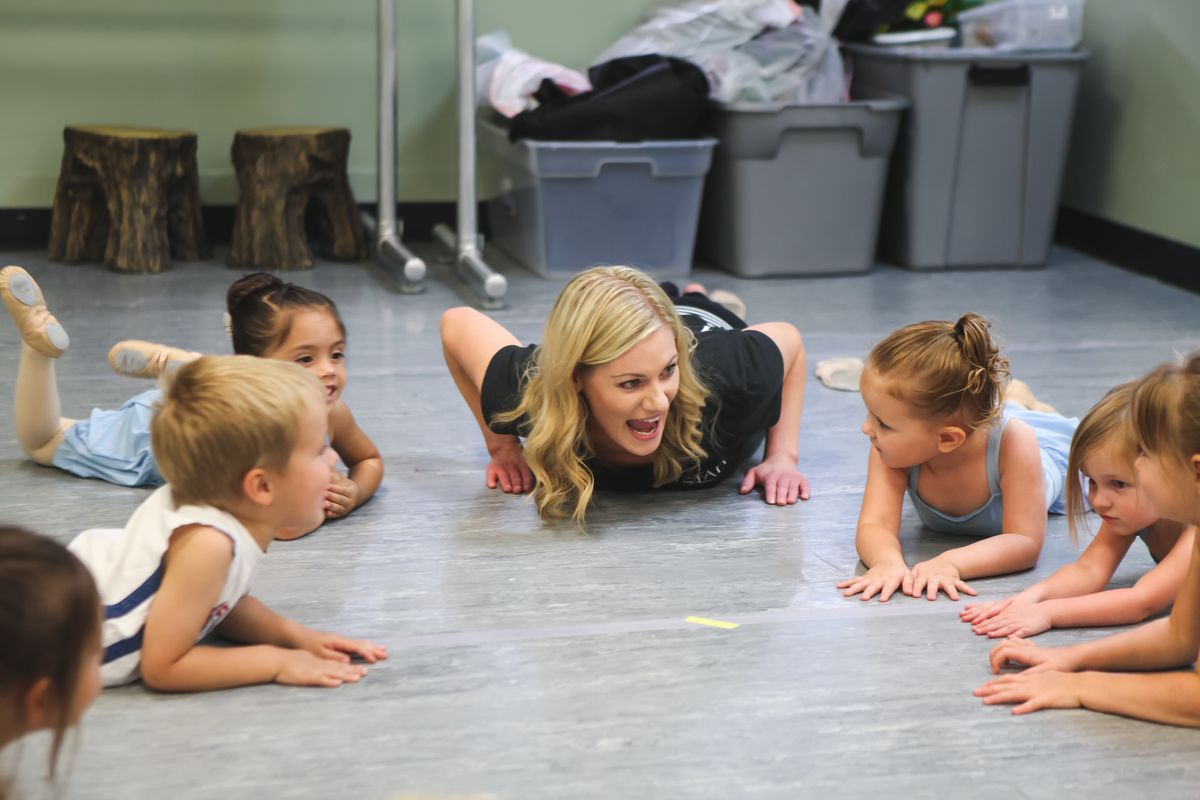
Utah Dance Artists owner Brooke Maxwell remembers a mom calling to talk about the discomfort her 14-year-old daughter felt each time her ballroom teacher asked her to demonstrate. The mother pleaded with Maxwell to keep her daughter’s name confidential when speaking with the teacher, because she didn’t want to cause her child more unwanted attention. What was most surprising is that the dancer had been singled out in a positive way—because she paid attention and worked hard. Sensitivity, Maxwell realized, can come in unexpected forms. “When it comes to students being sensitive in class, the only way we can help is to have an open conversation,” she says.
These types of situations can be tough to navigate, especially when students are nervous to express how they’re feeling. Maybe they have anxiety when they’re singled out or cry because they feel frustrated in class—or they’re scared to leave their caregiver at the door to the studio. Paramount to easing sensitivity issues is to first correctly identify the source of the problem. Then, teachers can work with dancers in a way that is both gentle and effective, helping them overcome sensitivities and enjoy a positive experience in the studio.
Calm the Jitters
Young students might be afraid to go into class the first time. To make them feel welcome, try greeting them in the lobby first. “Get down on your knees so you’re at eye level and speak directly to the child,” says Becky Moore, artistic coordinator at Marin Ballet in California. “Try to establish a relationship so they feel comfortable following you into the studio. Teachers naturally want to talk to the parent, but they should talk to the student first.”
Linda Hamilton, a former dancer with New York City Ballet and a clinical psychologist who works with performing artists, suggests giving parents of toddlers just starting dance a letter describing who you are, what you’ll be working on throughout the year and a list of books you might use in class. “It helps the parent prepare the child,” she says. But if a student still cries at the start of class, she’s probably not ready and should try again the following week. Shy dancers might sit on the floor to watch—use your gaze and smile to make them feel included. Keep props like scarves or small maracas handy, too, for an easy way to involve timid onlookers. “You can hand out scarves to everyone,” says Hamilton. “Then they’re sitting, watching and experiencing it.”
Keep It Positive
Most dancers crave attention from their teachers, but not everyone takes correction well. Some students are so plagued with self-doubt and frustration that they tear up easily. “My instinct is to try to make them feel better and get them to understand that the corrections are meant to help,” says Moore. “But sometimes they need to just step out of the room, use whatever coping mechanisms they have and then reenter.” Moore will also remind dancers, particularly students in this age group, that even the older dancers sometimes cry. “I want them to know that it’s not weird. Even if they don’t know why they’re upset, that’s OK, too!”
Try to offer positive feedback and limit critiques. “I would love for teachers to focus more on the effort than the outcome, especially as a dancer is getting older,” Hamilton says. “People can become afraid of making mistakes.” If something doesn’t work, help the dancer see that it has nothing to do with a measure of talent. It’s a problem to be solved.
Navigating Body Issues
Sometimes dancers get frustrated due to anatomical issues, such as hypermobility or growth spurts. “Their tendons and ligaments are like loose rubber bands holding their joints in place,” says Hamilton. “For example, they might be able to do a pirouette combination one day and not the next. It can be very demoralizing for the dancer.” To help students overcome this challenge, Hamilton recommends working with a physical therapist or Pilates instructor to bring consistency to their technique. “Always make sure it is a positive and empowering experience,” she says. “Dance should be joyful!”




